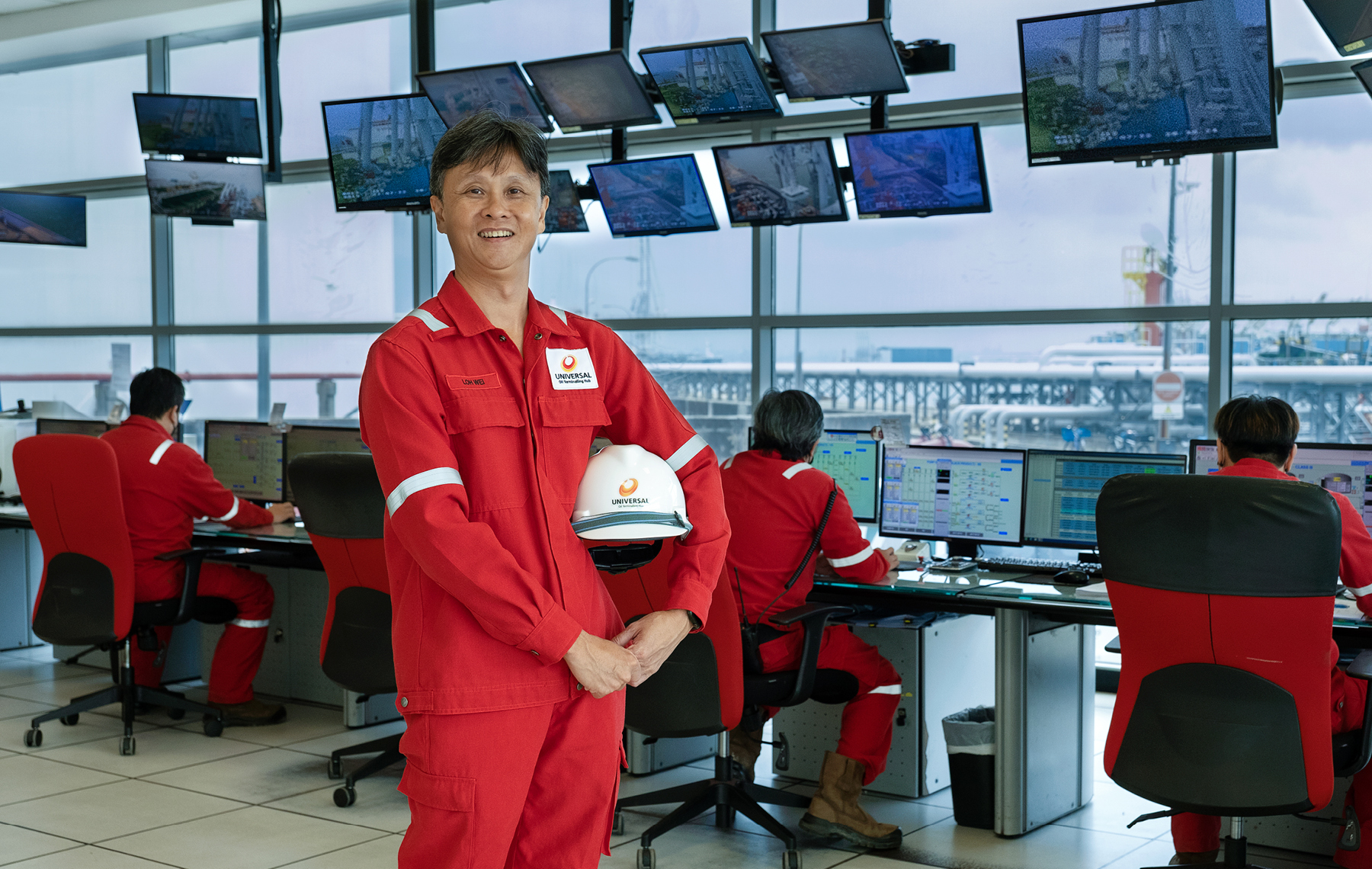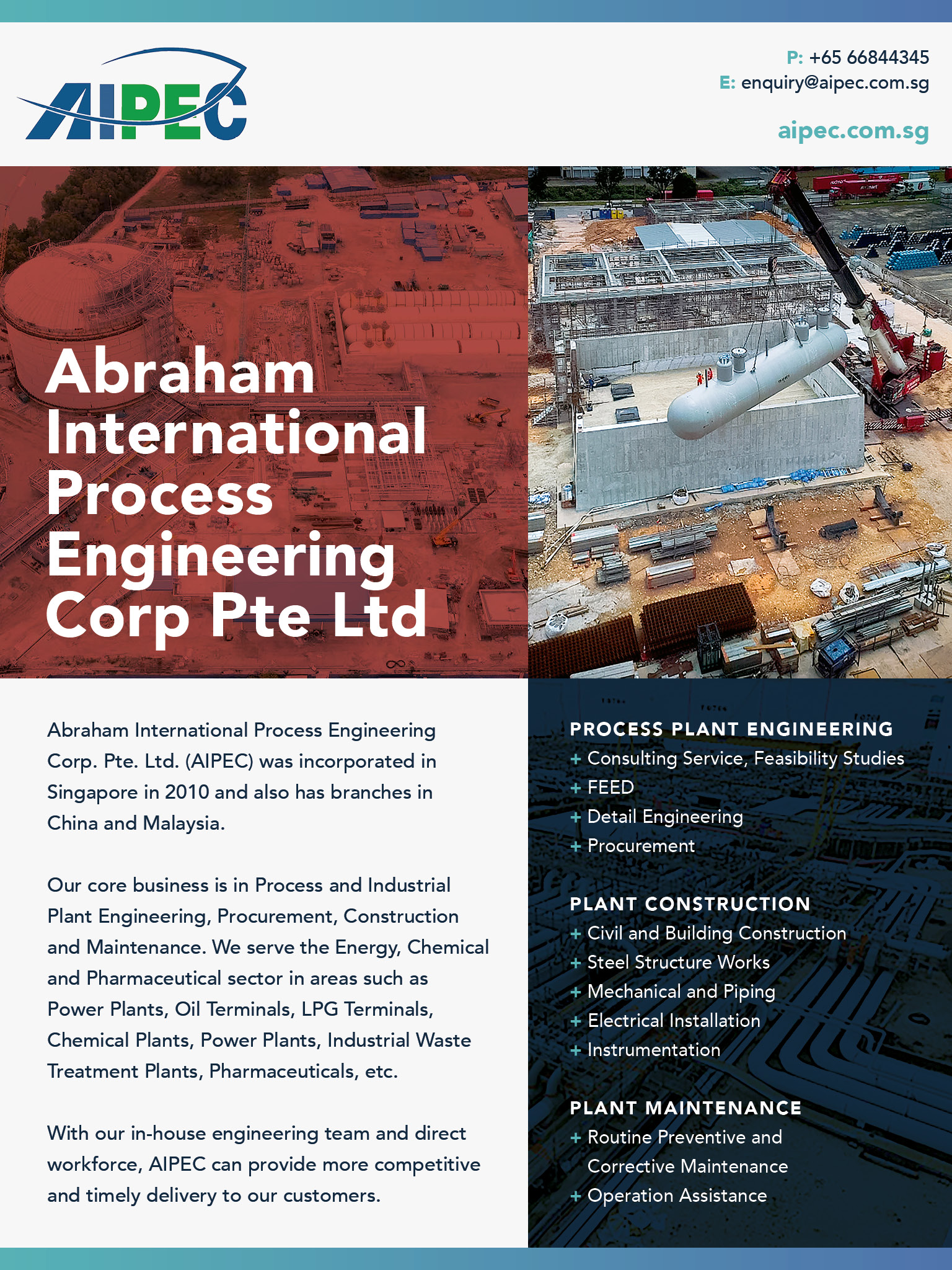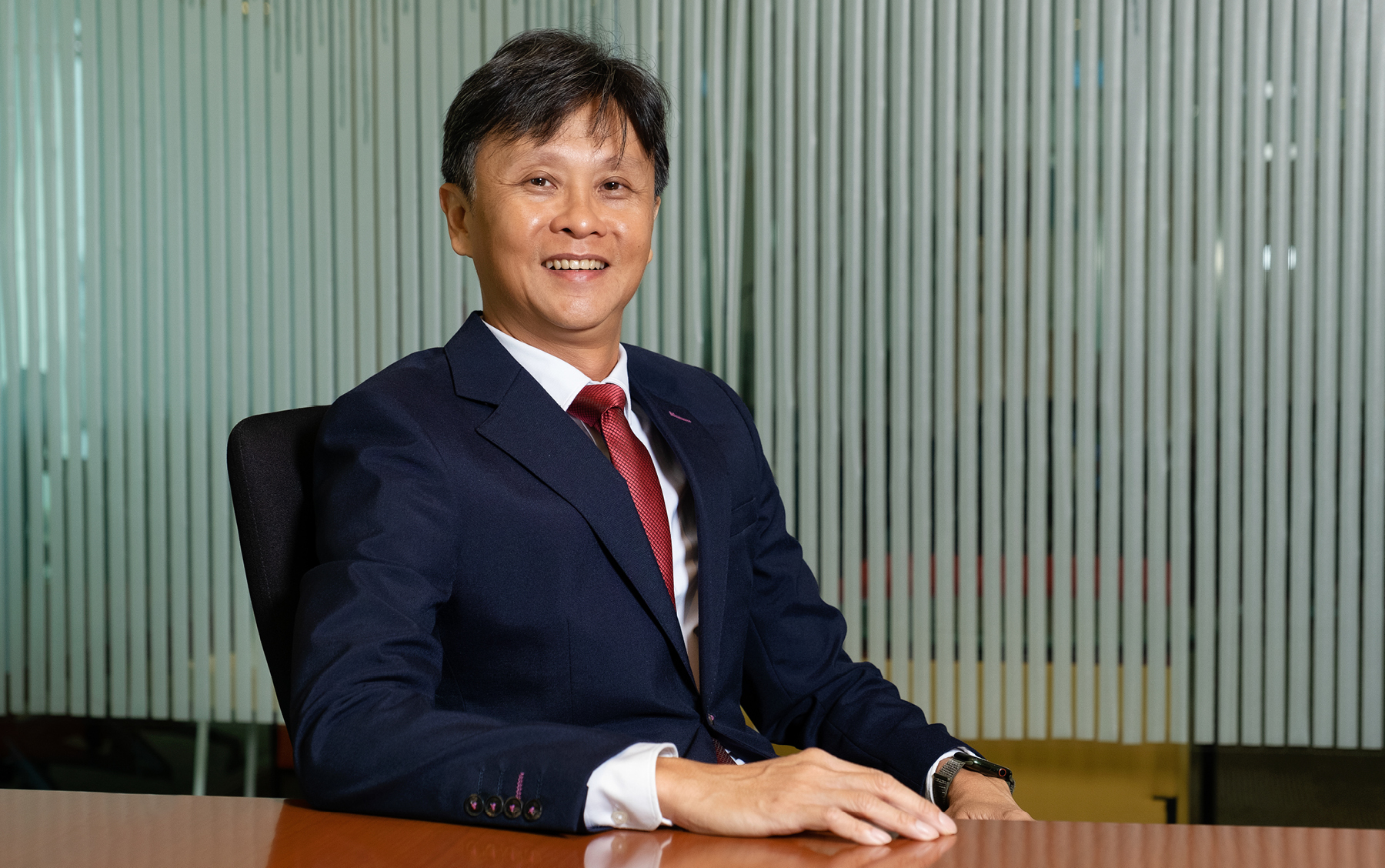Language
You can read the magazine in one of the following languages
Geolocation
You can read the global content or the content from your region

When Loh Wei first set foot on Jurong Island, two days into a graduate role in chemical engineering, the landfill had yet to be placed. The only way to access the planned industrial zone, rising out of seven reclaimed islands off the coast of Singapore, was by boat.
“My boss at the time wanted me to go to the site and have a look,” the now CEO of Jurong Port Universal Terminal (JPUT) tells The CEO Magazine. “It took me about two-and-a-half hours from where our office was to get to the site, and another two-and-a-half hours back home.”
More than 20 years later and Loh can reflect on how this now globally renowned energy chemicals hub has been the constant across his career. “I’ve built my career around Jurong Island,” he says. “Petrochemicals, infrastructure, energy, oil, gas. I’ve been through the whole cycle of it.”

“I’ve built my career around Jurong Island. Petrochemicals, infrastructure, energy, oil, gas. I’ve been through the whole cycle of it.”
It was in early 2021, while working for the government-owned Jurong Port as General Manager for Jurong Port Tank Terminal (JPTT), that the opportunity arose for Jurong Port to acquire the Universal Terminal oil storage facility.
While the COVID-19 pandemic was a difficult time for all, Loh is also aware that the pandemic is what triggered “a string of coincidental” events that enabled Jurong Port to acquire a stake in the Universal Terminal. “Due to COVID-19, Hin Leong put this asset up for sale. And we were in the right place at the right time to be able to put in a winning bid,” he admits.
In buying the 41 per cent share previously owned by oil trader Hin Leong, Jurong Port became the single largest shareholder of the oil storage terminal alongside other owners MAIF (part of Australia’s Macquarie Group) and PetroChina International (Singapore).
Prior to working with JPUT, Loh had spent five years building up JPTT from scratch. “As General Manager of the joint venture with tank storage company Oiltanking, I was tasked with not only the project approval but also lobbying the shareholders and the banks to put up the cash in the form of the equity and loan we needed to build the terminal,” he reveals.

Once the final investment decision was made, Loh turned his efforts towards the operational aspect of the facility. “From a three-person office, we became a 40-person business in the course of 18 months,” he says with a smile. “Then we secured our first customer.
“JPUT is a port, but not in the traditional sense,” Loh explains. “We’re an oil terminal and oil hub. Traders use us to physically store or warehouse their oil so they can then trade or blend this important energy commodity.”
Situated on 56 hectares of land (the equivalent to 60 football fields) at the southern edge of Jurong Island, the terminal is one of the largest petroleum storage facilities in Asia–Pacific.
And in the biggest bunkering port in the world – Singapore sells nearly 50 million tonnes of bunker fuel annually – nearly one-third of that total volume flows through JPUT. “We are actually a cornerstone, a necessary infrastructure to keep oil flowing,” Loh says. “Container ships need it so there’s no delay to your deliveries, your sofas, your TVs, your online purchases. We play a vital role in that sense.”
Nine months into running the terminal, Loh called a meeting with his entire team of 120 people. The reason? To start sketching out a five-year plan. “But in order to look forward to the next five years, we had to look back at what had been done in the previous five years,” he notes. “Because you must understand your past before you know where your future is.”
Especially when, for the best part of that time, the terminal was under other management. Loh brought a way of running the business that was considerably different. “Amid the changes to the market due to IMO2020, followed by COVID-19 and the war in Ukraine, I had to implement new strategies,” he reflects.
The terminal, as Jurong Port had inherited it, was a trader’s terminal. “The trader, Hin Leong, traded its own oil and had its own logistics chain, so its own shipping, oil vessels and distribution network. It was essentially a vertically integrated business,” Loh explains.

“In order to look forward to the next five years, we had to look back at what had been done in the previous five years. Because you must understand your past before you know where your future is.”
Self-sufficient, the terminal was operated as a critical piece of the overall company. “The remaining clients who used the storage facilities at the terminal were just additional icing on the cake,” he adds, and it was just a select few who were welcome to make use of the facilities.
“The DNA of Jurong Port, and the remaining two shareholders, MAIF and PetroChina, is very different. We are now a purely independent terminal, much like the OPEC Systems and Oiltankings of the world.”
This independence is a selling point. “We can assure clients that when they put oil in our terminal, we will take good care of it and that their competitors won’t know how much oil they have in our tanks. Everybody competes on a level playing field.”
Now, as he looks towards the next five years, Loh is building out from the framework he has inherited. “Currently, we are purely an asset infrastructure terminal operator,” he explains. “I have no oil to trade or ships to lease.”
He’s had to tell the shareholder base that the time has come for a different approach.
“Since we no longer have access to the underlying oil to trade, we have to sweat our assets, to work them harder,” he says. It’s around this strategy that he’s built a long-term plan. “It’s all centred around increasing and developing new revenue lines through logistics chain integration, pipeline connectivity and data.”
Under the strategy, storage will no longer be the sole contributor to the business. Instead, to integrate the logistics chain, new pipeline networks are planned, which will connect the terminal to refineries and petrochemical facilities on Jurong Island. Once operational, trade will flow freely, something Loh notes “used to be frowned upon because rival terminals wanted to protect their client base”.
However, Loh can see the bigger picture and the advantages such a network would bring to all parties. “In the oil business, traders need to physically exchange their oil,” he points out. Currently, they can do this by chartering a vessel or exchanging it among the terminal’s customers. Not only does this proposed pipeline optimise the process, but it is also a way to enlarge JPUT’s trading community.
Additional logistics services are also planned that will deliver improved efficiency and effectiveness to customers, such as mass flow meters, bunker barges and lighterage services.
And Loh has also pinpointed another potential revenue stream as he looks to diversify business activities: financial and data integration. “We are an active participant in the Singapore Trade Data Exchange with SGTraDex because we believe our digital transformation will help Singapore’s oil trading ecosystem.”

“Since we no longer have access to the underlying oil to trade, we have to sweat our assets, to work them harder.”
For JPUT’s customers, the data it sends to SGTraDex – a digital infrastructure designed to securely share data between oil trading and supply chain ecosystem partners – is potentially valuable as it enhances efficiency as well as transparency, which may lead to better financing terms.
“We’re going to help our customers transform their treasure trove of data that they store with JPUT by digitalisation. This digital transformation will allow our customers to improve their business whether it is to their customers or to their financiers,” he says.
JPUT will have to invest in new hardware and software, improve its business processes and upskill its workforce to enable such digital transformation, but Loh believes this is an important step in the overall strategy for the future of the company.
With more than a decade of executive leadership behind him, Loh now talks confidently about the leadership values that he holds onto as he drives JPUT towards new business avenues. “It’s so important to constantly make yourself available to your people and to listen to them,” he insists.
That means everyone from the ground staff to the operations team, or “the people who hold the tools”, as he describes them. “Similar to going to war with your lieutenants and your colonels, being present and there to listen to them makes them a cohesive group,” he says.

“I don’t want to be too aggressive and destroy the winning formula I have, yet I can’t be too tentative if I want to go ahead and implement the changes.”
Then there’s the immediate leadership team, who he says he also stands alongside in battle. “Many times I let their opinion become my decision – this empowers them and puts them in a position to deliver because it’s their recommendation,” he says. “Because I’ve listened to them, they listen to me.”
Yet he’s also not afraid of telling them, “It’s the Loh Wei, not the highway”.
As he steers a team made up, in part, of people grown accustomed to the old management regime, Loh knows change management is inherently challenging. “I do have a few major material changes that I want to implement to this organisation, including introducing new blood, a new way of thinking to help propel the change,” he hints.
It’s a fine balance he’s playing with. “I don’t want to be too aggressive and destroy the winning formula I have, yet I can’t be too tentative if I want to go ahead and implement the changes.
“Maybe next year, we’ll have another interview and I’ll tell you whether or not I’ve been successful,” he says with a grin.
Given the direction he’s leading JPUT, there’s little doubt Loh will be.
He says that JPUT is in talks to develop the concept further – to start training its pilots to receive big oil tanker vessels. “This will allow our customers to optimise as they’ll save a lot of anchorage time for their vessel.”